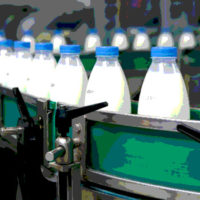We have entered a new age of food delivery in America. More people are choosing their meals based on ease, convenience, mobile ordering and speed while sacrificing taste and quality for convenience. Despite the delivery evolution, many restaurants and food providers are failing to meet the rising demand for convenient and high quality food delivery experiences. So how are they really doing?
In order to evaluate the current state of food delivery, Sabert recently conducted the first-ever Food Delivery Pressure Test during the 2015 National Restaurant Association (NRA) show in Chicago. The test was a way of taking a valuable snapshot of the state of food delivery at the biggest food show in the world.
The test was designed to assess how four types of food establishments—from fast food to five-star restaurants—performed in three distinct categories of delivery service—food packaging, delivery service and food quality.
The team of Sabert delivery analysts placed orders at exactly 5 pm on Friday, May 15—the height of the NRA rush hour. The restaurants evaluated included a high-end steakhouse, a dim sum restaurant, an Italian restaurant and an American restaurant. In order to cover the full spectrum of delivery issues while remaining fair, the Sabert team ordered a variety of similar food types at a range of temperatures simultaneously using phone as well as mobile and web applications.
As the deliveries came in, the Sabert evaluation team recorded the time it took to deliver, and conducted immediate and complete inspections of the packaging, presentation, quality and taste of the food itself. Once all deliveries had been made, the data was recorded, and the results were analyzed. While the Sabert evaluation team didn’t make the test an easy one by any means, the results they found were equally as shocking as they were disappointing.
From late service and leaking foods to soggy entrees and underwhelming sides, the test showed that a majority of food providers are consistently falling short on even the most basic delivery processes. Many of the assessed restaurants used packaging that was either not designed to withstand temperature-specific foods or ill equipped to contain specific food types. In more than one instance, a restaurant delivered hot and cold foods in a single delivery bag, causing cold foods such as sushi and kale salad to reach 80 °F and 108 °F, respectively.
While there were a number of key failure points seen in the test, restaurants can address and solve each of them with some minor adjustments to how they provide delivery service.
Issue: Placing Hot and Cold Foods in Close Proximity
If someone orders a leafy salad, he or she likely expects it to be served cold. Similarly for soup orders, the expectation is that it will be served hot. A common mistake among many food providers was delivering hot and cold foods in close proximity (i.e., same delivery bag or packaging container). In more than one instance, a restaurant delivered and stored hot and cold foods in a single delivery bag, causing foods to reach unsafe and/or unappetizing temperatures.
Solution: During delivery, cold and hot foods should always be in separate packaging and in separate delivery bags. This ensures all foods delivered mimic restaurant quality and are served at their appropriate temperature.
Issue: Partially Filled Packaging and Inappropriate Packaging per Food Type
While having fewer packaging options available may save space and money for a business, improper food packaging caused food orders to appear unfulfilled. Improper packaging sizes led some food portions to appear smaller than anticipated, creating the impression of low value. Additionally, packaging used for fried foods that was ill equipped to handle the condensation caused by frying led to soggy foods with poor texture.
Solution: Restaurants should have a variety of packaging options to fit multiple needs. Using fully filled packaging creates a greater impression of value and increases the visual appeal of foods, as well as the overall delivery experience.
Equally as important for food providers is ensuring that packaging is appropriate for certain food types, including wet, fried, messy, hot and cold foods, which will increase the quality of the food upon its arrival to the customer. Restaurants that have packaging engineered for all food types will be better prepared for menu additions and seasonal food changes.
Issue: Unprofessional Delivery Staff
As more and more restaurants begin to outsource their delivery service to companies, many are losing control of the delivery experience once the food leaves the restaurant doors. Though it opens up service to a much broader customer market, outsourcing delivery to unreliable external delivery persons led to varying satisfaction levels with overall customer service during the Food Delivery Pressure Test.
Solution: Ensure all delivery partners are aware of brand and service expectations prior to any food delivery. This includes both internal and external employees and partners. Delivery partners can be seen as an extension of the brand, and it is important to choose them wisely. If an external delivery person does not live up to brand and restaurant expectations, notify the delivery service provider of any issues.
Issue: Inaccurate Delivery Estimates
Providing customers with an estimate of how long they can expect to receive their food is a great way to ease any concerns with long wait times, especially during high volume hours. During the Food Delivery Pressure Test, restaurants that did not provide a delivery estimate or those that were late upon arrival created frustration with their service. These restaurants scored lower than those that both provided an estimate and arrived early or on time.
Solution: Always provide a delivery time estimate and ensure that the delivery person transports foods within the timeframe. If a restaurant or the delivery person knows the food will be arriving late, placing a call or text message to the customer to notify him/her of the delay can not only temper concerns but often creates a more enjoyable experience and lets the customer know their satisfaction is a priority.
Issue: Unbranded Packaging and Delivery Materials
Restaurants and eateries that provided packaging and delivery bags with branded images increased the overall food delivery experience and were seen as higher-end establishments, regardless of food quality. In addition, branded attire for delivery staff conveys a more upscale experience.
Solution: Use branded images and logos on delivery bags, food packaging and, if possible, on the delivery person’s attire. While branding food packaging may require high-quantity orders and large monetary investment that some establishments cannot meet, stickers and paper bands provide a branded experience at a minimal cost. By investing in a branded delivery experience, customers are more likely to remember brands for quality and have a positive association with the establishment.
For any restaurant or food establishment new to the delivery market or for those who have concerns about the current state of their delivery, it is important to constantly monitor customer satisfaction and evaluate where adjustments should be made. The solutions listed above can provide a boost to existing delivery service or a jump start to those interested in reaching this untapped customer base.
As delivery trends continue to rise, it is becoming clearer that packaging and delivery service can impact the overall delivery experience as much as or sometimes more than the food quality itself.
Jessica Burrell is the marketing communications manager at Sabert Corporation.




